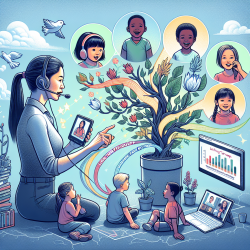Introduction
The COVID-19 pandemic has dramatically reshaped educational landscapes worldwide, particularly in medical education. As the pandemic forced a shift from in-person to virtual learning environments, the concept of Learning Communities (LCs) emerged as a critical support system. This model, which emphasizes relational connections, has proven invaluable in navigating the complexities of virtual education. In this blog, we explore how the principles of LCs can be applied to enhance virtual therapy services, particularly for children, and how practitioners can leverage these insights to improve outcomes.
The Learning Community Model
Learning Communities are structured to foster longitudinal connections, providing a foundation for student professional development. By creating smaller units or groups, LCs offer personalized academic and career planning, milestone celebrations, and well-being support. This structure is crucial in maintaining connections between peers and faculty, especially during times of social disconnection.
Application in Virtual Therapy
For practitioners in the field of speech language pathology and online therapy services, the LC model offers a framework for enhancing virtual interactions. Here are key takeaways from the research that can be implemented:
- Active Listening and Empathy: Essential elements of LCs include active listening and empathy, which build trust and understanding. These principles can be applied in virtual therapy sessions to create a supportive environment for children.
- Frequent Touchpoints: Just as LCs emphasize regular advisor-advisee interactions, virtual therapy should incorporate frequent check-ins to address the evolving needs of children and their families.
- Peer Support and Group Dynamics: Encouraging peer interactions through virtual group sessions can provide children with a sense of community and shared experience, similar to the cohesive dynamics of LC small groups.
Psychological First Aid in Virtual Settings
The concept of Psychological First Aid (PFA) is highlighted in the research as a means to mitigate acute distress and foster hope. By incorporating PFA principles, practitioners can support children in coping with the uncertainties brought about by the pandemic. Key elements include:
- Empathy and Trust Building: Establishing a safe space for children to express their feelings and concerns is crucial.
- Future-Focused Orientation: Encouraging children to focus on positive future outcomes can help in reducing anxiety and building resilience.
Encouraging Further Research
While the LC model offers a robust framework for virtual therapy, it is essential for practitioners to engage in ongoing research and adapt strategies to meet the unique needs of their clients. Exploring additional resources and case studies can provide deeper insights into effective virtual therapy practices.
Conclusion
The transition to virtual learning and therapy environments presents both challenges and opportunities. By adopting the principles of Learning Communities and Psychological First Aid, practitioners can enhance their virtual therapy services, ultimately leading to better outcomes for children. For those interested in delving deeper into the research, we encourage you to explore the original study: Using a learning community model for virtual medical student support during the COVID19 pandemic.










